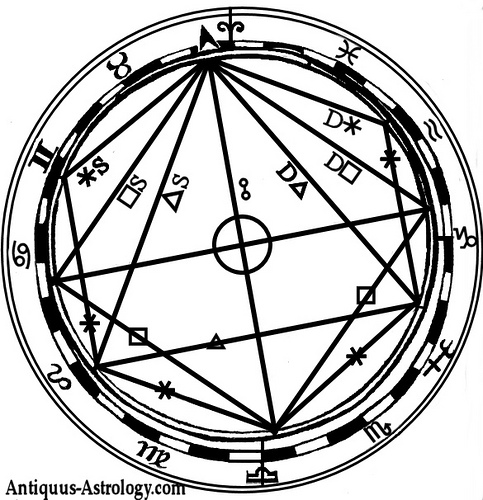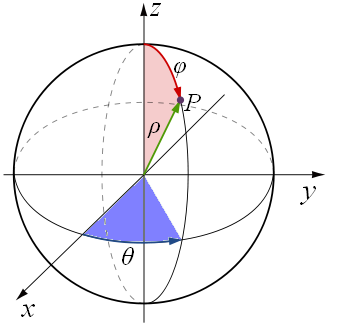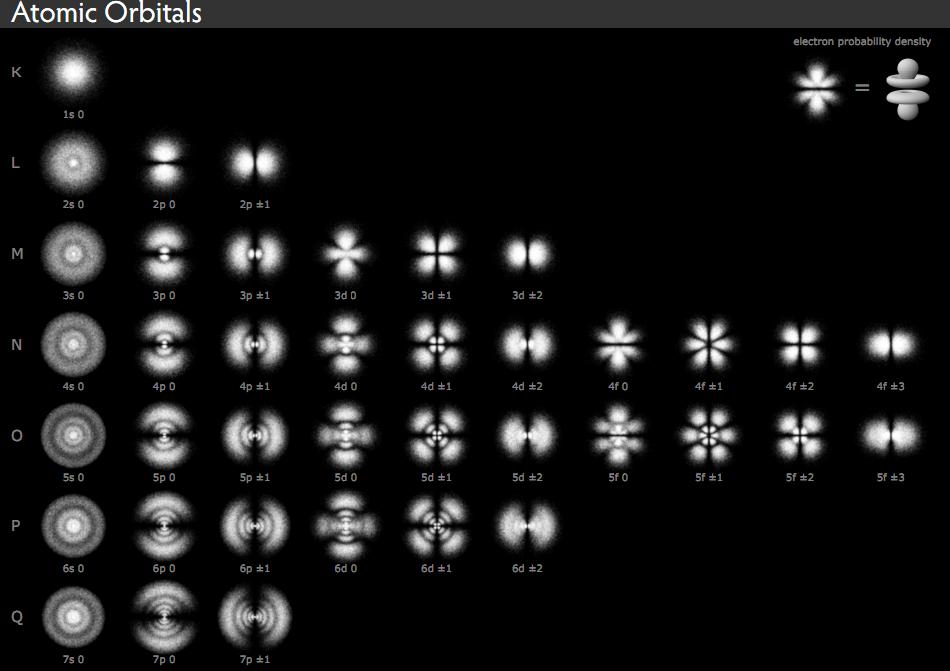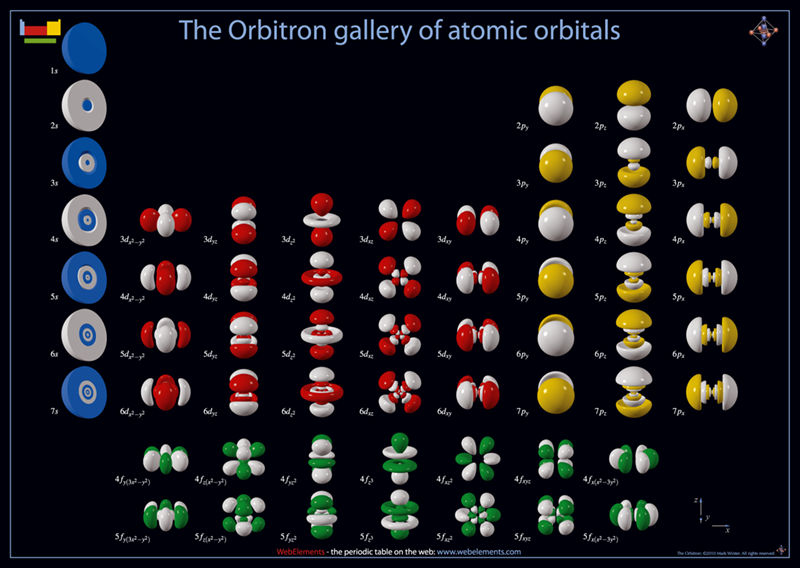The Quantum Key of Pythagoras
Introduction

From ancient times there was a belief that there is an esoteric meaning and significance in Numbers and Geometry. Ancient are also the first attempts to understand at a deeper and symbolic level the meaning of Numbers and their possible connection to Geometry. One of the ancient sages, Pythagoras, was not only the founder of geometry as an abstract science, not only the founder of the musical scale and Harmony based on simple arithmetic relations, but perhaps the first who condensed and mapped his teachings into a system that only used numbers and geometry. His most famous abstract symbol is Tetraktys, the Sacred Quaternion, a geometrical and symmetrical arrangement of the first four numbers represented as dots, which it is believed to contain his highest and most esoteric teachings. Its importance is recorded in the following verse from the work Golden Verses: "I swear it by him [Pythagoras] who has transmitted into our souls the Sacred Quaternion, the source of nature, whose cause is eternal". According to his teachings the power of Numbers extends well beyond the mere task of counting and into the abstract world of ideas. Numbers are not just counting symbols but symbols-entities that contain "space" (perhaps through their relation to geometry) and quality (as symbols of abstract objects). For him, abstract entities like justice, freedom, but even the soul itself could be described or symbolized with numbers. Abstract was also his approach to Geometry and its relation to Numbers through some relatively simple rules of correspondence: 1 corresponds to a point, 2 to a line, 3 to a triangle, 4 to a square or tetrahedron [a three dimensional triangle] etc.
Later Plato, the Neo-Platonic and several western occultists tried to rescue, understand and expand these teachings. Many esoteric sciences such as Numerology, Alchemy and Astrology ultimately have their foundations in this relationship.
For example, the number zero, 0, is associated with the circle and usually symbolizes the whole, before its manifestation as the primordial matter (for a detailed discussion see the article: Cosmological Symbols). One, 1, as a point, symbolizes the initial manifestation and similarly the two, 2, as a line, horizontal or vertical, connects and unites the opposites. Similarly the number three, 3, related to the equilateral triangle and 60 degrees, the four, 4, with the square, or the cross, and 90 degrees.
Numbers and Geometry in Astrology
Another example comes from Astrology where the planetary aspects of 'opposition' (number 2 or 180 degrees) or 'square' (4 or 90 degrees) are considered to be unfavorable, disharmonious but the 'triangle' (3 or 60 degrees) good and harmonious...but why? Why the mere relative position of the planets and more particular their geometric arrangement is affecting positively or negatively the influence of their emanations? Theoretical Astrology has not advanced in these inquires since the days of Ptolemy and it just uses the keys as they are presented to us by the original masters.
 Let us compare this to the progress made in conventional astronomy in order to demonstrate more clearly the need for renewed, modern approaches and ideas in astrology, even if these ideas are not going to be recognized as valid by the mainstream astronomy. In astronomy, the geocentric system of Ptolemy was replaced by the Heliocentric system of Copernicus. Still the laws of motion of the celestial objects were not known. Even after Kepler presented his three laws of motion for celestial objects, laws that we still use today to calculate and predict celestial motion, the underlying dynamics, the cause of motion was not known. Only after Newton realized and formulated the Universal law of gravity into a single equation, it was shown that everything else is a simple consequence, a simple result of this law. There is a need to make similar advances in the field of theoretical astrology, a science outcast for the moment, in order to deepen our understanding of the underlying laws and dynamics involved but also in order to restore the necessary connection with astronomy and modern astrophysics and planetology. This will help us understand better and deeper our connections with our environment, near and distant. Perhaps only then we will realize that we are also dynamical factors that, in a smaller scope, influence our environment, so that we can finally assume responsibility of our influences and emanations. Acquiring a key, might help us understand at a deeper level the laws that govern this relationship. It might shed light on various 'natural' inter-relations and show us a more harmonious way of coexistence with Nature.
Let us compare this to the progress made in conventional astronomy in order to demonstrate more clearly the need for renewed, modern approaches and ideas in astrology, even if these ideas are not going to be recognized as valid by the mainstream astronomy. In astronomy, the geocentric system of Ptolemy was replaced by the Heliocentric system of Copernicus. Still the laws of motion of the celestial objects were not known. Even after Kepler presented his three laws of motion for celestial objects, laws that we still use today to calculate and predict celestial motion, the underlying dynamics, the cause of motion was not known. Only after Newton realized and formulated the Universal law of gravity into a single equation, it was shown that everything else is a simple consequence, a simple result of this law. There is a need to make similar advances in the field of theoretical astrology, a science outcast for the moment, in order to deepen our understanding of the underlying laws and dynamics involved but also in order to restore the necessary connection with astronomy and modern astrophysics and planetology. This will help us understand better and deeper our connections with our environment, near and distant. Perhaps only then we will realize that we are also dynamical factors that, in a smaller scope, influence our environment, so that we can finally assume responsibility of our influences and emanations. Acquiring a key, might help us understand at a deeper level the laws that govern this relationship. It might shed light on various 'natural' inter-relations and show us a more harmonious way of coexistence with Nature.
The Quantum key
In the remainder of this article we propose an alternative, modern key to relate (abstract) numbers with (spatial) geometry which we derive from the dynamics and equations of quantum theory, the theory that governs the word of atoms. Consider it as an alternative way that gives meaning to the Pythagorean hypothesis that 'numbers have a spatial aspect'. We should consider it as a complementary tool, a 'look from another point of view', a key that is based on Quantum Theory. We show that this relationship of number-space can be understood if we use as a key the spatial configuration of atomic orbitals according to the rules of quantum theory which has, for each triplicity of numbers, a particular spatial orbital configuration; the configuration solution is a simple consequence of the corresponding equations.
The atomic orbitals are just regions of space where atomic electrons have an increased probability to be found. So, for every triplicity of integer numbers there is a unique geometry, a definite configuration in space of the 'force field', its spatial influence, according to the laws of quantum mechanics which, in turn, influences the motion of electrons as they mover 'around' the nucleus. Numbers not only acquire space attributes but they also introduce spatial differentiation and anisotropy, a result that is not possible in terms of everyday, classical physics.
Macroscopic space is considered to be uniform and isotropic (every point has the same properties everywhere and in every direction). But with quantum theory, at least in the microcosm, the 'space', the 'field of influence' of the electrical forces (and not only) acquires a definite configuration and geometry. This configuration contains the case of uniformity as a sub-case but it is not limited to it, many more are also allowed. Uniformity is one of many options. We realize that a similar 'quantum' extension of this procedure to macrocosm could help us understand the 'why' of the planetary aspects, why the dynamics of the planetary energies depend on their geometry, something that is impossible if the 'space' or the 'field of influence' of these energies is uniform and isotropic. Also, in trying to understand 'why' a certain configuration is favorable or non-harmonic we could use as key the laws of musical harmony as they were presented by Pythagoras. This is the subject for another article since it is related to the art of astrology.
An important point that we need to understand before we proceed is that this quantum relation between numbers and geometrical configuration is not a characteristic of the electric force alone but of every fundamental force of Nature. All known fundamental forces in Nature are 'central' (in the sense that they act along the line that connects the two interacting objects). Therefore the quantum key is applicable to all central forces and it is a simple consequence of their nature and the corresponding laws, it is a consequence of how Nature is. Since gravity is also a central force itself the key is theoretically applicable to it too.

Let us now describe the essence and the use of the key. One might ask why we need a set of three numbers and not just one? The answer is rather simple; space has three independent dimensions or coordinates. Usually, in geometry, we represent these as three lines perpendicular to each other, x,y,z. In the case of central forces it is more appropriate to use the so called 'spherical' representation since in this case the cause of the force occupies the center of its field and it has a radial relation to any object entering the field. The fact that all forces of Nature are central is seen in the fact that all systems, from the smallest atom to solar systems and the galaxies themselves appear as vortices where smaller objects spin around a center of force. In this representation x,y,z are replaced by ρ, θ, φ where ρ is the radial distance that connects the two objects whereas θ and φ are two angles, so that in the end we get three dimensions. These three dimensions, in quantum physics, are related/correspond/represented by one quantum number (via the equations), the n, l, m (for ρ, θ, φ respectively). The first one, n, is called the primary quantum number and it defines the radial features of the field, the radial geometry of it. The other two, l and m, relate to the other two dimensions. Before we start with some examples we need to note the following rules of the theory. The number l must always be smaller than n and the number m takes values starting from -l to +l in steps of one.
Examples and Applications
Let us discuss in detail a few examples. The simplest triplet that complies to the rules discussed above is (1,0,0). This is because n cannot be negative and cannot be zero (no manifestation). The geometrical configuration for this triplet, according to the key (see also figure of atomic orbitals) is a sphere, the field of influence of the force is isotropic. This features is the result of the second number, l=0, which also forces m=0. It is remarkable the similarity in the esoteric meaning of 1, 0 and the result of n=0,l=0 in quantum theory. In the figure this combination (1,0,0) which is referred to as (1s) orbital is the blue sphere in the upper left corner. But this is only the beginning.
Let us examine the next combination: If n=2 then we have the combination (2,0,0) [2s] and the combinations (2,1,-1), (2,1,0) and (2,1,1) . The first combination (2,0,0) is shown just below the (1,0,0) in the figure as white sphere with a blue center. We now see the trend; if n=2 (3,4,5 etc) the basic configuration (l=0) is represented as a series of same number of concentric circles. The other three combinations are the yellow/white hemispheres at the same level but on the right side of the figure. We observe that the specific plane-geometry of the combination is defined by (l) and that the third number (m) defines its orientation in space. The third line in the figure is for n=3 etc. We see that as numbers increase so does the complexity and multiplicity of combinations.
It might be interesting to study these geometries but let me make a few remarks. First, let's observe that where l=2 there is linear alignment of opposite blobs and where l=4 there is a square! In (3,1,0) [3p] it appears that there is a mixture of opposition with conjunction! Also interested are the triplicities (3,2,+-2/+-1) and (3,2,0) [3d] which are shown in the top first line of red/white orbitals. From these, the first combinations are mixtures of some sort of 'attractive' square, if one looks at the details of the shapes, and (3,2,0) combines this with a circular feature!
The second comment has to do with the role of orbitals, and their spatial geometry, in defining the crystal structure of the material. This feature is the clue that might help unlock the mysteries of Alchemy, the understanding but also the building of materials by mixing in a harmonious way numbers and geometrical configurations, a musical composition of materials.
The third remark has to do with the planetary aspects in astrology. The Sun, but also every planet, is surrounded by its field of influence, in analogy to atomic orbitals. Therefore the relations and interactions of the planets could be seen as analogous to the relations and interactions of atoms inside the greater space of the crystal. Let us ponder on these analogies.


